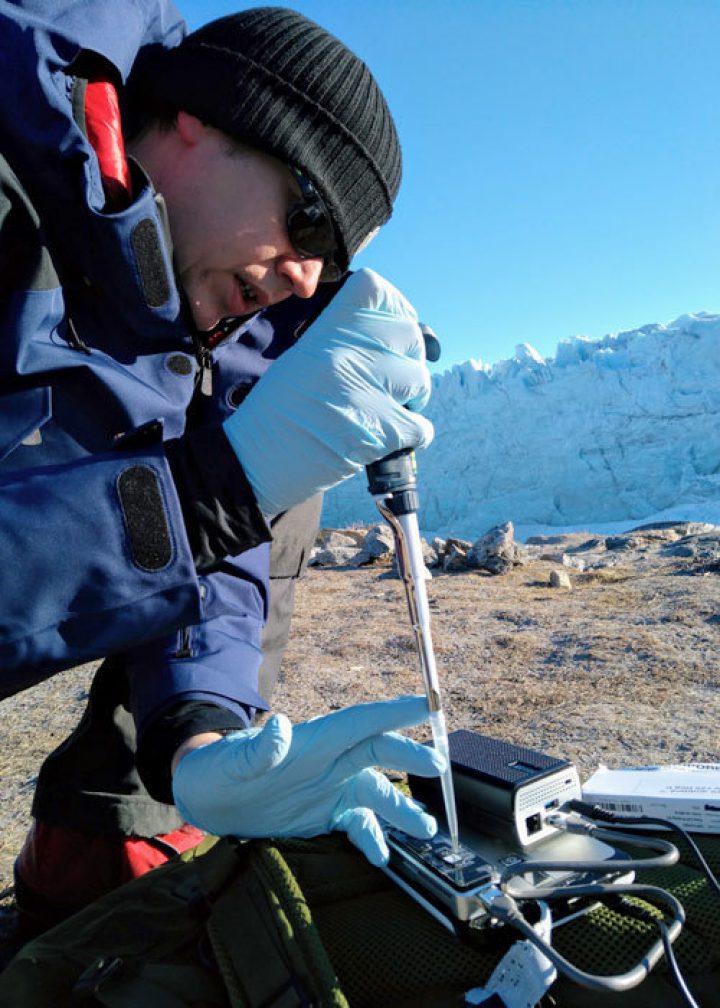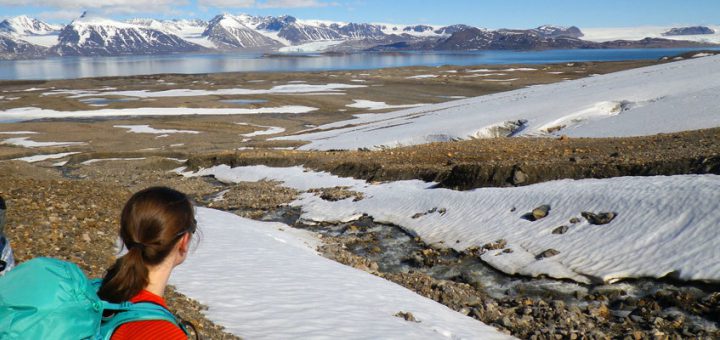Arctic fever: Zombie climate myth must die
Aged microbes from the ice are unlikely to devour humankind; climate change just might
By Richard Black
Share
Last updated:

Every so often, dormant headlines are thawed out and released on an unwitting public. 'Are There Zombie Viruses In The Thawing Permafrost?' asks NPR, while BBC Earth proclaims 'There Are Diseases Hidden in The Ice, and They Are Waking Up'. Meanwhile The Times alerts us to 'the Global Warming Peril from Diseases Trapped in the Ice', and The Guardian pulls no punches with 'All Hell Breaks Loose as The Tundra Thaws'.
Each outbreak tells a familiar story: the Arctic is melting, and unknown ancient germs might be thawed out. An expert is consulted, and the article concludes that as the Arctic’s fever spikes we will catch its cold.
This is not one of those articles.
From 'The Thing' to 'The X-Files', science fiction has primed us to fear that pathogen revival from a warming Arctic is a major risk, increasingly so as the region warms at twice the global average rate. Here we examine why such claims rest on thin ice.
Chain of foolishnesses
For any disease released from ice to kill us it needs to have reached the Arctic a long time ago, persisted in the cold, survived thawing or melting in an infective form, and must then infect hosts. Break any of these links in the chain and the zombie disease is slain.

Yes, the Arctic is full of microbes. We estimate that over a septillion microbial cells - that's 1024, if you like your numbers in that form - leak from melting glaciers every year.
But DNA sequence data shows that very few cause disease. Many of the most common bacterial species in snow and ice also live in bottled mineral water, for example. Most are psychrophiles, adapted to life in deep cold.
The next challenge for a zombie disease is surviving the permafrost thaw. This typically proceeds by the frozen soil reaching the surface and entering the seasonally active layer, soil that freezes and thaws cyclically on at least a seasonal timescale. Similar processes occur as glacial ice melts.
The same freeze-thaw cycling is used in our labs as a technique for bursting microbes. It incurs cellular damage much like frostbite does to humans. Psychrophiles often have protective mechanisms against freeze-thaw damage, which help them to survive the cold but prevent them growing in warm-blooded animals, making them ineffective as human pathogens.
For one of the most dangerous pathogens in the Arctic freezer – influenza - we know that freeze-thaw damage is an effective disinfectant. Despite killing over 50 million people in the 1918 pandemic, several studies have failed to recover viable virus from remains of victims exhumed from the permafrost.
For example, in 1998 an international team working in Longyearbyen, Svalbard carefully exhumed the bodies of German soldiers who had died from Influenza in 1918. Because the bodies had experienced cycles of freezing and thawingin the seasonally active layer of permafrost, no traces of the virus could be recovered.
Efforts in the 1950s to grow influenza virus from 1918 victims in Alaskan permafrost also failed. Just as well. The scientist responsible was photographed using his mouth to siphon the cadaver material; no special lab, no space suit. The scientist in question lived to repeat the experiment to prove the presence of fragmented Influenza genomes in the same cadavers 40 years later.

Studies of glacier-mummified corpses show us that the same is true for many bacterial diseases.
Anthrax is an exception, thanks to its toughened spores. However; fortunately it is not a disease that spreads explosively from host to host, and we have tests, vaccines, and antibiotics to counter it. While a 2017 outbreak in Siberia was linked to thawing of dead reindeer infected in 1941, it is unlikely that anthrax presents a long-term danger. Analysis of sugar lumps infectedas part of a World War I spy plot suggests that its spores can die within a century.
The final point is that in order to spark a pandemic, the pathogens must encounter hosts, and these hosts must then pass the infection to others. News stories often cite the recovery from Siberia of 30,000 year old ‘monster viruses’ that infect amoebae as proof that weird things last a long time in the Arctic. However, they are a case in point, being harmful only to amoebal hosts that are ubiquitous within the soil.
For a zombie disease, its initial victims would likely be isolated small populations naturally quarantined in the remote Arctic - factors which mitigate rather than exacerbate the risk of a pandemic.
Absolute zero?
There is one remaining danger: the pathogens’ genetic material can last longer than the pathogens themselves, and we can resurrect viruses from their frozen genomes.

Ethical concerns have been loudly raised about the application of these reverse genetics approaches to influenza, leading to scrupulous safeguards being established to prevent resurrection of the 1918 strain from Alaskan permafrost.
However the potential for other, long-dead Arctic viruses to be reborn from their fossilised genomes has not yet been discussed.
Two 700-year-old viruses collected from the Canadian Arctic were resurrected in a lab in the middle of San Francisco. Protected only by a lock and a key, the viruses were shown to infect tobacco plants and possibly insects.
In this case the consequences were thankfully minor, but deep discussion of infection control is paramount before regeneration of Arctic viruses becomes more commonplace.
We need dedicated studies at the interface of medical and Arctic microbiology before we can say the risk of a zombie disease is zero.
But we can say the media representation of the risk vastly exceeds reality and potentially overshadows some real health problems.
These include potential pathogen migration into the Arctic as it warms, allowing disease vectors to spread. More last-chance-tourists are arriving in Arctic frontier towns on cruise ships. The ships are outbreak hot zones, and the towns often have major socioeconomic, public health and infrastructure problems.
Look behind you!
What, therefore, are the dangers from microbes from the warming Arctic?
A microbe need not be pathogenic to cause harm. We now know that microbial feedbacks accelerate Arctic change. These include methane produced by permafrost Archaea, contributing to the $90 trillion impact on global GDP from permafrost thawing expected by the year 2100.
The darkening effect of algae and cyanobacteria growing on the Greenland Ice Sheet is accelerating its melting. The Greenland Ice Sheet is now the primary contributor to global sea level rise. By the year 2100, the impact on global GDP from flooding from the sea level rise expected at even 1.5°C of global warming is forecast to exceed $14 trillion annually.
If we place zombie diseases on the same risk axis as climate change accelerated by Arctic microbial feedbacks, the risk appears trivial. For us, it’s the climate change-amplifying feedbacks from non-pathogenic microbes in the Arctic that keep us in a cold sweat.
Acknowledgements
Dr Arwyn Edwards is a Senior Lecturer in Biology at Aberystwyth University. Dr Joe Cook is a postdoctoral researcher in Glaciology at the University of Sheffield
We thank NERC support for our MicroMelt project (NE/S001034/1 @GlacierMicrobes) which will map the biodiversity of microbes lost from glaciers. We also acknowledge the team at Ice Alive, a science communication organisation dedicated to exploring Earth’s cold places, who have enabled collaborative work between the authors.
Share